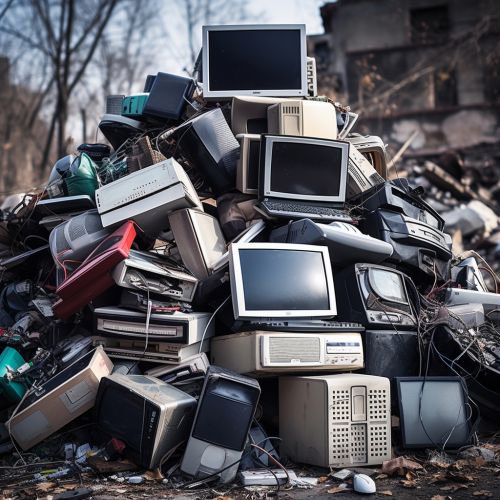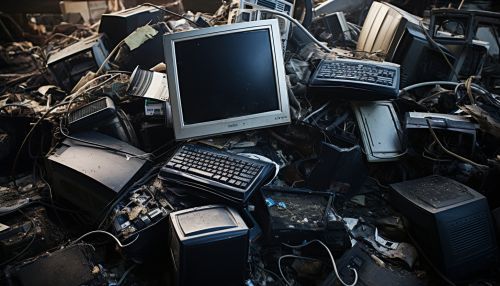Electronic Waste
Introduction
Electronic waste, or E-Waste, is a term used to describe discarded electronic devices and components as well as substances involved in their manufacture or use. The disposal of electronics is a growing problem because electronic equipment frequently contains hazardous substances. In a world where technology is rapidly advancing, the generation of electronic waste is becoming a serious issue.
Definition and Types
Electronic waste is defined as any discarded electronic or electrical devices. These can range from common household items such as TVs, refrigerators, microwaves, toasters, and computers to sophisticated industrial machinery. Electronic waste can be categorized into three main types: small IT and telecommunications equipment, large household appliances, and consumer electronics.
Generation and Disposal
The generation of electronic waste is a rapidly growing problem. The United Nations estimates that the world produces about 50 million tonnes of e-waste each year, and this figure is projected to increase by 21% by 2030. The disposal of electronic waste is a complex and costly process. It involves several stages, including collection, transportation, sorting, dismantling, recycling, and disposal.
Environmental and Health Impacts
The improper disposal of electronic waste can have serious environmental and health impacts. Many electronic devices contain hazardous materials such as lead, mercury, and cadmium, which can leach into the soil and water, causing soil and water pollution. These substances can also cause serious health problems, including kidney disease, brain damage, and cancer.
Legislation and Regulation
There are various laws and regulations in place to manage electronic waste. These include the Basel Convention, which regulates the transboundary movements of hazardous wastes, and the WEEE Directive in Europe, which sets collection, recycling, and recovery targets for electronic waste.
E-Waste Recycling
Recycling is a key part of the solution to the e-waste problem. It involves the extraction and recovery of valuable materials from electronic waste, such as copper, gold, silver, and palladium. However, e-waste recycling is a complex and costly process, and it is often more economically viable to export e-waste to developing countries, where environmental regulations are less strict.
Future Trends
The future of electronic waste management lies in the development of more sustainable production and disposal methods. This includes the design of electronics with longer lifespans, the use of safer materials, and the implementation of more effective recycling technologies.
See Also


